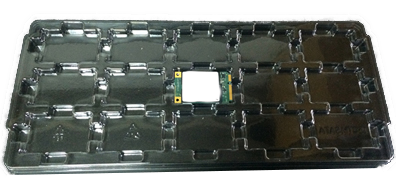Electrostatic Discharge (ESD) protective packaging plays a pivotal role in shielding electro-sensitive devices throughout shipping and storage processes. Post the mitigation of the COVID-19 pandemic’s impact, the ESD packaging industry is experiencing a resurgence, thanks to strategic initiatives implemented by key market players.
Understanding ESD Protective Packaging
ESD protective packaging encompasses materials and items designed to shield electro-sensitive products during shipping, storage, and handling. Its primary purpose is to reduce the risk of electrical charges within the device, making it the optimal choice for safeguarding sensitive electrical equipment, including flammable liquids and gases, against potential ESD events.
In recent years, the demand for ESD packaging has soared, particularly in industries such as automotive, defense & military, manufacturing, healthcare, and aerospace. Despite facing a downturn during the COVID-19 pandemic due to supply chain disruptions, the industry is poised for recovery post-pandemic, as indicated by various market research analyses.
Types of ESD Packaging
Conductive Material: This type of material directs electric current safely, preventing charge buildup and maintaining the flow of electricity at a convenient level.
Dissipative Material: Designed to slow the stream of electricity, dissipative materials reduce the power of an electrical charge, safeguarding sensitive goods enclosed within the packaging.
Anti-Static Material: Specifically designed to hinder tribocharging, anti-static materials are effective in reducing ESD events when used in conjunction with an ESD program.
Best Practices for Choosing the Perfect Protective Packaging
I. Understanding Product Sensitivity: Acquire data about the ESD sensitivity of electric devices through in-house calculations, contacting manufacturers, or evaluating published data.
II. Knowledge of Distribution Atmosphere: Consider the shipping environment, including handling conditions, temperature, and humidity, while selecting the appropriate packaging material.
III. Decide the Best Suited Packaging System: Choose between static dissipative or low charging materials based on the type of ESD-sensitive equipment, considering factors like reusability, disposability, and aesthetic requirements.
IV. Test the Selected Materials: Follow test methods to classify packaging materials as conductive, static dissipative, or insulative, simplifying the selection process.
V. Plan a Packaging System: Design a packaging system based on ESD sensitivity and circulation environment assessments, incorporating static dissipative or discharge shielding packages as needed.
VI. Trial the Finalized Packaging Design for Efficiency: Conduct testing or trial runs to expose packages to potential incidents during the shipment process, ensuring the design’s effectiveness.
Future Prospects of the Market
The global ESD protective packaging market is poised for significant growth due to its indispensable role across industries. Additionally, major companies’ increasing investments in biodegradable electrostatic discharge packages will create ample opportunities for the market in the near future.
To discuss custom applications or learn more about our products, contact us at (949) 916-5797. Our friendly representatives are ready to assist you in finding the right ESD packaging solutions for your specific requirements. Trust Chipsalz Inc. to safeguard your electronics throughout their journey.




